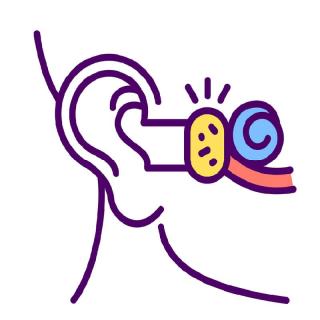How Earwax Affects Hearing Aids

3 min read
Earwax, a substance found in everyone’s ears, plays a pivotal role in hearing. Comprised of oil, sweat, dead skin cells, and other components, it serves as a self-cleaning agent with protective, lubricating, and antibacterial properties. But what happens when earwax interacts with hearing aids? Let’s explore this intricate connection more closely.
Hearing Aids and Earwax Buildup
Wearing hearing aids can cause earwax, also known as cerumen, to increase in production. This occurs because hearing aids obstruct the natural pathway that lets earwax exit the ear. As a result, earwax accumulates within the canal. This buildup may not seem like a big deal, but it leads to several complications.Problems with Excess Earwax
Earwax buildup can cause the following issues:- Worsened hearing: Accumulated earwax can block the ear canal, leading to a temporary but potentially significant decrease in hearing ability.
- Tinnitus: This condition, characterized by a constant ringing in the ears, can be exacerbated by excessive earwax.
- Damage to hearing aids: Earwax can clog or corrode the delicate parts of hearing aids, affecting their performance. You may experience feedback, poorly fitting hearing aids, or a complete malfunction.
- Infections and discomfort: If not properly managed, earwax buildup can create an environment that fosters bacterial growth, leading to infections and discomfort.
How to Avoid Earwax Buildup
Preventing earwax buildup is essential, especially for those who use hearing aids. Here are some strategies to keep your earwax at healthy levels:- Clean your hearing aids: Maintain a diligent maintenance routine to clean your hearing aids and remove excess earwax. This includes wiping the device with a soft, dry cloth every night before bed. You can also use specially designed brushes, ventilation cleaners, and earwax removal tools. Follow the manufacturer’s guidelines for the best results. Then, store your hearing aids in a secure, dry place when not in use.
- Avoid over-cleaning your ears: Ironically, using cotton swabs can push earwax further into the ear canal, so avoid this method. You also shouldn’t use ear candles to remove excess earwax as this method is not supported by scientific evidence and may result in serious injury. If you develop earwax buildup, seek professional guidance for help removing it.
- Check in regularly with a professional: Scheduled visits with your audiologist can help you keep up with best practices on maintaining proper ear hygiene. Set routine appointments as recommended, and seek medical attention immediately if you experience sudden hearing loss, pain, or discharge from the ear.
